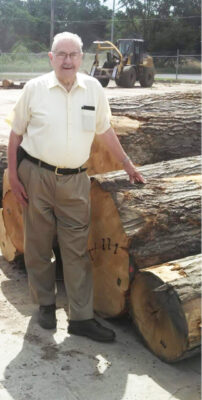As we welcomed a late spring and warmer temperatures, logging activity had improved in most areas contacted. Sawmills advise decks are growing, and so lumber production increases were anticipated to follow. Cautious optimism was being felt as to demand from most markets would still gain momentum going forward.
Kiln-dried Ash demand is reported as steady but is at a low level. Export markets were the same as earlier in the year noted some contacts. China was the biggest buyer for this species. Prices were not changed, and it was noted that green Ash was moving to wholesalers and to export markets, but was a bit slower on the domestic front to end users.
Inventories are adequate to high for Basswood end users and wholesalers who are buying on a replacement basis. Exports to Southeast Asia and Mexico are dropping. Business for No. 1 Common and No. 2A is slower than for upper grades.
The sales of the regionally important Hard Maple have seen a slowdown in demand from cabinet manufacturers than they purchased in previous years, as well as wood component suppliers. These reductions are attributed to the increased use of alternative material imports of cabinets and wood components. It is difficult to find outlets to compensate for this lost business. The same is being reported for Soft Maple as business is also slow for wood furniture manufacturers who were one of several users of this species.
Cherry exports to China are not doing as well as in previous months. Prices are reported as off, and also some buyers are asking price reductions when they place new orders. Green and kiln-dried prices did have upward momentum before the slowdown in Chinese demand, but have now flattened.
There are decent sales for Hickory said area contacts, but exports are weak. No. 2A and Better stocks are a bit higher relative to demand, causing prices to soften. Secondary manufacturers and wholesalers are taking up green Hickory, with supplies having tightened in some areas.
Flooring manufacturers are having difficulty finding sufficient Oak lumber to produce their products. This is being experienced in both residential and truck trailer flooring plants. It was noted that flooring plants were paying similar prices for Red and White Oak.
Red Oak green lumber production is moving well noted sawmills. Flooring manufacturers are purchasing No. 2A and 3A along with larger quantities of No. 1 Common Red Oak. Wholesalers are reigning in their purchases of No. 1 Common and Better due to reduced demand from China for kiln-dried Red Oak.
Market conditions are favorable for White Oak, and so sawmills are being challenged to increase their production of this species. White Oak log procurement is challenging due to competition from stave plants.
Log supplies of Poplar are improving at mills in certain areas where Poplar is the dominant species. Green supplies were reported as meeting demand, even though they are reportedly tight elsewhere. Kiln-dried markets of this species are also doing well, but some contacts noted that there is a slowing demand from the Far East and growing price pressures in parts of the U.S.
Following confirmation of the Emerald Ash Borer in the Regional County Municipality (RCM) of Avignon, in the Gaspésie area of Quebec, in July 2022, the Canadian Food Inspection Agency (CFIA) will continue to regulate the area with notices of prohibition of movement. Ash material (such as logs, branches and woodchips) and all species of firewood cannot be moved offsite without permission from the CFIA. The property owners with confirmed detections of EAB in the RCM of Avignon have been notified. The CFIA will continue to survey and monitor the extent of the spread of this invasive beetle in 2023 in eastern Quebec and northern New Brunswick. The CFIA plans to consult with federal, provincial, municipal and First Nations partners and other organizations in the near future on options to manage Emerald Ash Borer in Eastern Canada.
Although EAB poses no threat to human health, it is highly destructive to Ash trees. It has already killed millions of Ash trees in regulated areas in Canada and in the U.S. and poses a major economic and environmental threat to urban and forested areas of North America.
The CFIA continues to work with federal, provincial, municipal and Indigenous partners and organizations to slow the spread of this pest.








